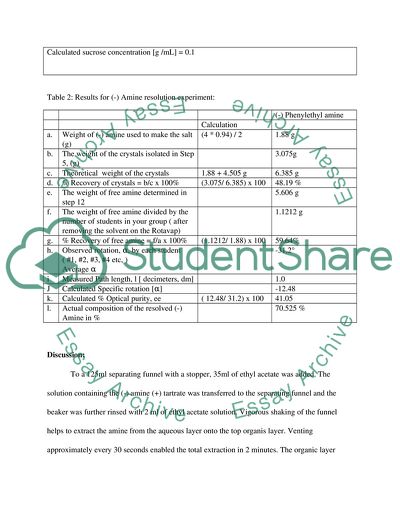Polarimetry: Separation of racemic mixture phenylethylamine Lab Report - 1. https://studentshare.org/chemistry/1844121-its-actually-a-lab-report-for-organic-chemistry-1
Polarimetry: Separation of Racemic Mixture Phenylethylamine Lab Report - 1. https://studentshare.org/chemistry/1844121-its-actually-a-lab-report-for-organic-chemistry-1.


